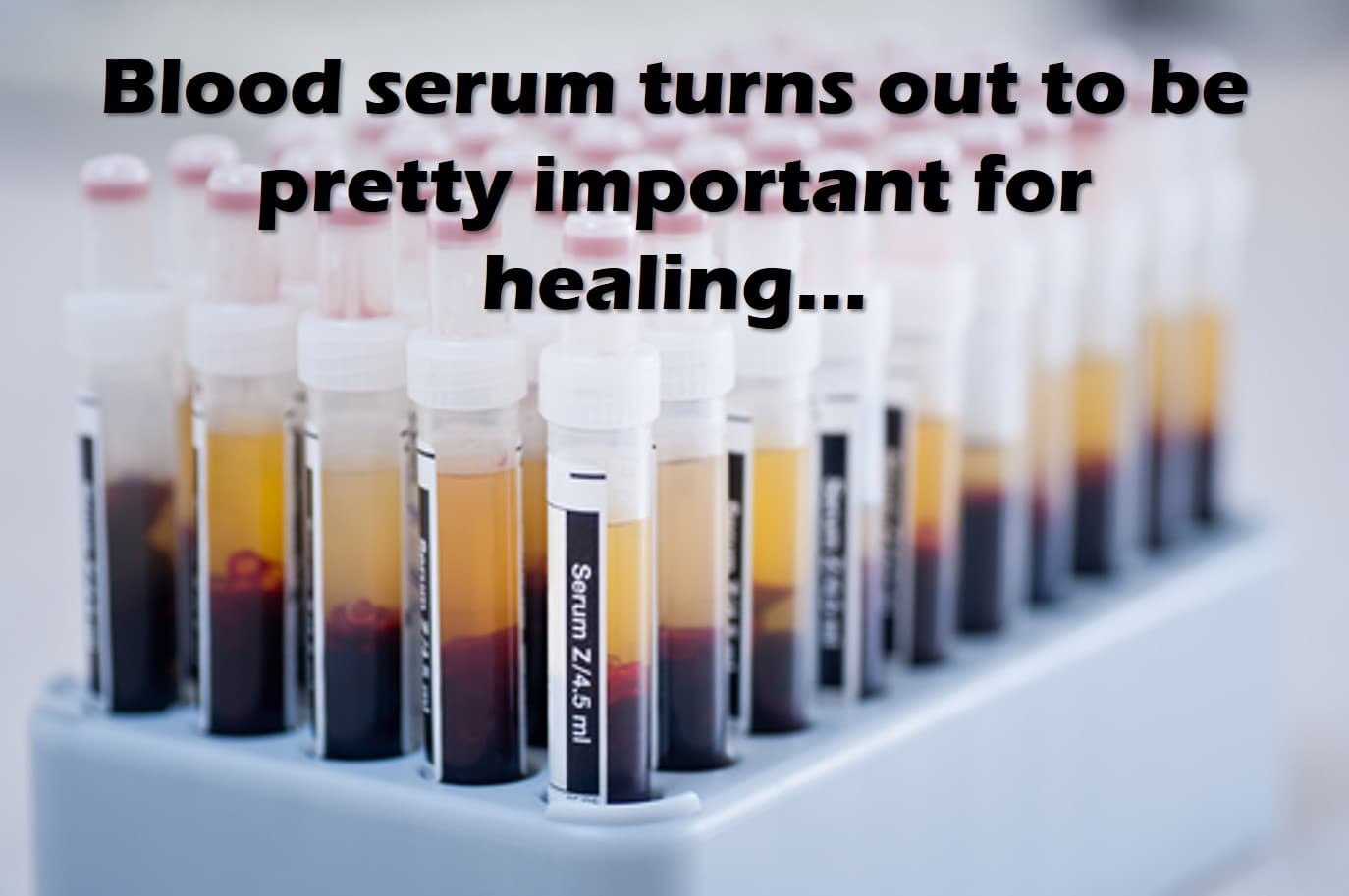Blood Serum Exposure Alone Activates Dormant Skin Cells
One of the things still being figured out about how autologous orthobiologics, like platelet-rich plasma, function is what components are needed for repair. Meaning which part of the mix is the most or least important. While that likely won’t be decided with certainty for a while, we do have a recent study that suggests that blood serum may be critical.

What Is Blood Serum?
The blood drawn from your body from a vein is whole blood. It contains all of the components of blood: red and white blood cells, platelets, clotting factors, proteins, hormones, electrolytes, antibodies, blood plasma, and much, much more. Whole blood can be centrifuged (spun very fast in a machine) to separate the blood cells from the blood plasma. Blood plasma is essentially the carrier liquid in which blood cells and other blood components circulate through the body. The blood plasma can then be centrifuged and processed further to separate the clotting factors from the blood plasma, and the liquid result is then called blood serum. So while blood serum is a component of blood plasma, the difference is that the blood serum does not contain clotting factors. It does, however, contain high concentrations of many other things, such as proteins, antibodies, hormones, cytokines, and so on.
How the Body Repairs Its Own Wounds
Think for a second about self-repair. Your body does it all day, every day. However, for the most part, we have yet to design a machine that can do this. Without it, every machine we make will predictably break down in the order of 5–20 years. With it, some human bodies can surpass 100. So understanding self-repair not only has benefits to help us live longer but also to one day design machines that can maintain themselves.
To repair a wound, such as a paper cut, for example, the body relies on the platelets (cell fragments) and clotting factors in the blood plasma to seal the wound and initiate repair. Platelets are full of healing growth factors (biochemicals that signal other cells to grow), so while they clump together to seal wounds and stop bleeding, they also stimulate other cells in the area to begin the repair process. If, however, an injury is beyond the body’s ability to repair itself, the blood can be centrifuged to concentrate the platelets, and the resulting platelet-rich plasma (PRP) can then be used to treat the wound or injury.
So blood plays a huge part in self-healing. While the blood serum, the blood plasma minus its clotting factors, doesn’t have the clotting components to aid with sealing up a wound or the growth factor-packed platelets, a new study suggests it may have another benefit: waking up dormant unwounded skin cells. Let’s review.
Dormant Skin Cells React to Exposure to Blood Serum
The new study set out to investigate what happens to dormant skin cells—in this case skin cells not activated by a wound—when they are simply exposed to blood serum. Using cultured blood-deprived keratinocytes (skin cells), researchers introduced blood serum. The results? The dormant cells became active and began to grow, migrate, and line up, similar to how they’d respond to a wound. This was a new finding as the previous belief was that a wound edge was required to stimulate cells to repair.
So if a simple drop of blood serum is all that is necessary to affect a repair response in a skin cell, what exactly does this mean? That the serum likely plays more of a role than we thought in helping orthobiologics, like platelet-rich plasma, do their thing. This would also explain why certain providers have seen nice results with PPP (platelet-poor plasma) injections in addition to PRP.
Does this mean we should all ditch PRP? Not really, as we also know from published studies and our own in-house lab research that the higher the platelet concentration, the more healing we tend to see. For example, we just were able to show this in experimental models of tendon healing. This upcoming paper (accepted by the peer review process and just awaiting publication) demonstrated that especially in older tendon cells, more platelets (i.e., higher concentrations of PRP) meant more healing.
The upshot? We need much more research to ferret out exactly what does what in the orthobiologic preparations we use every day. In the meantime, it’s good to understand that there’s more to the serum than previously thought. Maybe we can somehow maximize those specific factors that cause dormant cells to kick-start repair mode? Time will tell.

NOTE: This blog post provides general information to help the reader better understand regenerative medicine, musculoskeletal health, and related subjects. All content provided in this blog, website, or any linked materials, including text, graphics, images, patient profiles, outcomes, and information, are not intended and should not be considered or used as a substitute for medical advice, diagnosis, or treatment. Please always consult with a professional and certified healthcare provider to discuss if a treatment is right for you.
